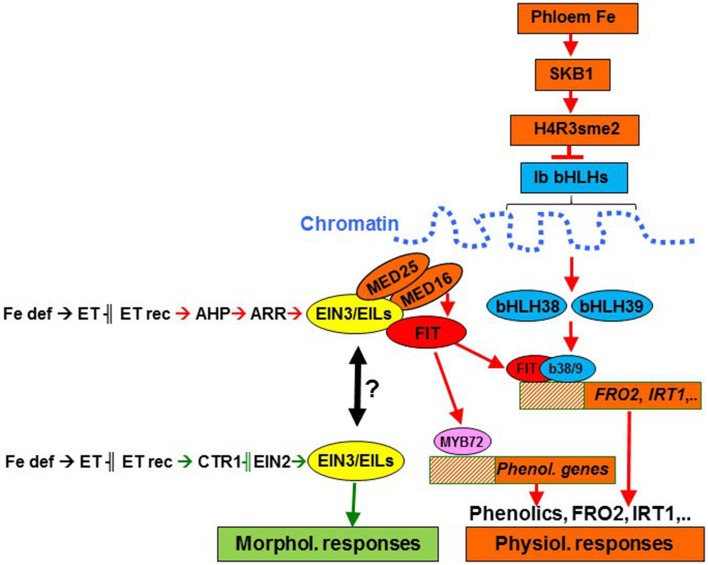Figure 7.
Ethylene may regulate morphological and physiological responses to Fe deficiency through different signaling pathways in Strategy I species. Ethylene could regulate morphological responses through a pathway including CTR1 and EIN2 (in green) and physiological responses through a CTR1-EIN2-independent pathway (in red), instead using AHPs (phosphotransfer proteins) and ARRs (response regulators; Shakeel et al., 2013). Both pathways could converge through EIN3/EILs activity under certain circumstances, since EIN3 and EIL transciption factors have been involved in the regulation of both physiological (Lingam et al., 2011; Yang et al., 2014) and morphological responses, e.g., root hairs (Zhu et al., 2011) and transfer cells (Andriunas et al., 2011). For the regulation of physiological responses, ethylene may interact with some Fe-related repressive signals, probably moving through the phloem (García et al., 2013; Mendoza-Cózatl et al., 2014; Zhai et al., 2014). This phloem-Fe, through SKB1, could favor the chromatin package, where are located the bHLH38 and bHLH39 genes, thus inhibiting their transcription (Fan et al., 2014). Fe def, Fe deficiency; ET rec, ethylene receptors.

